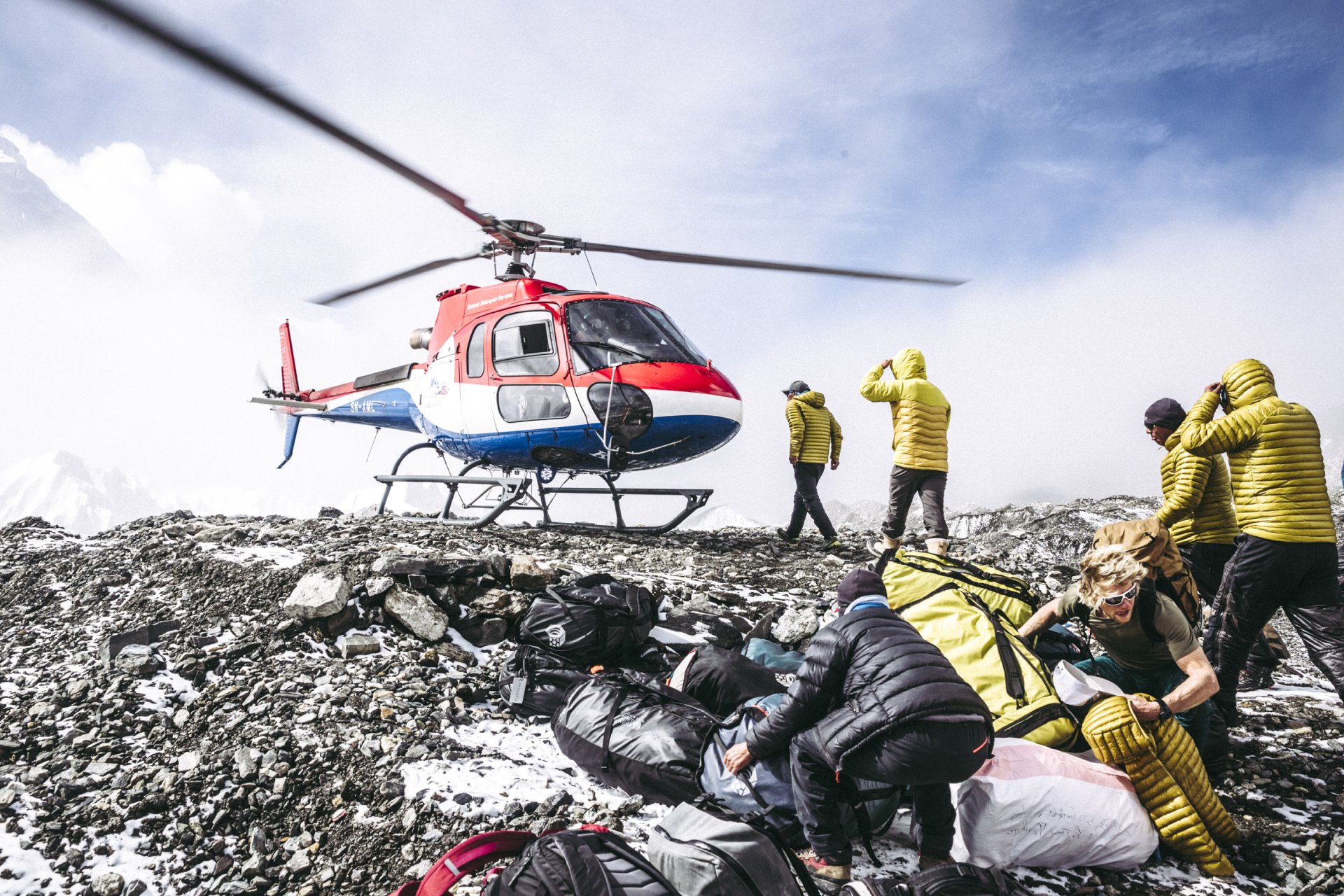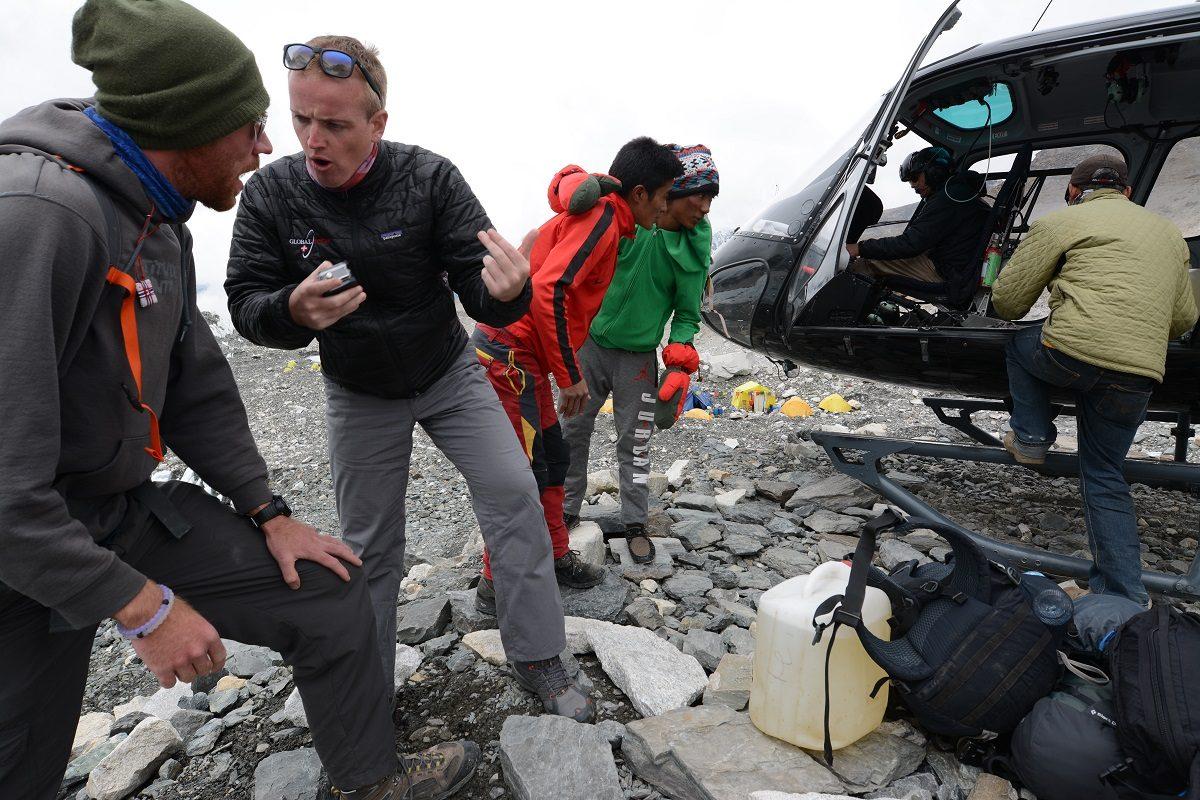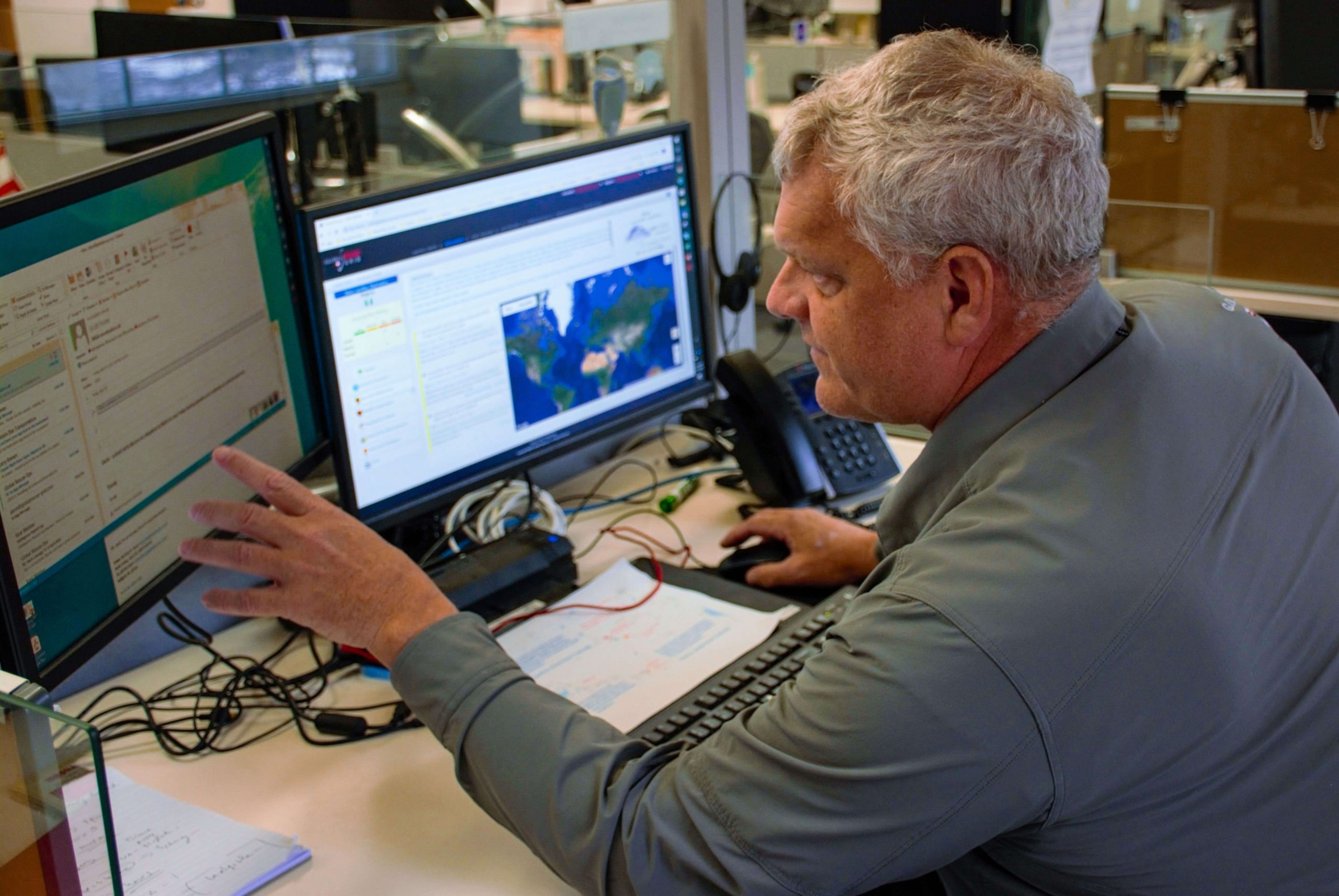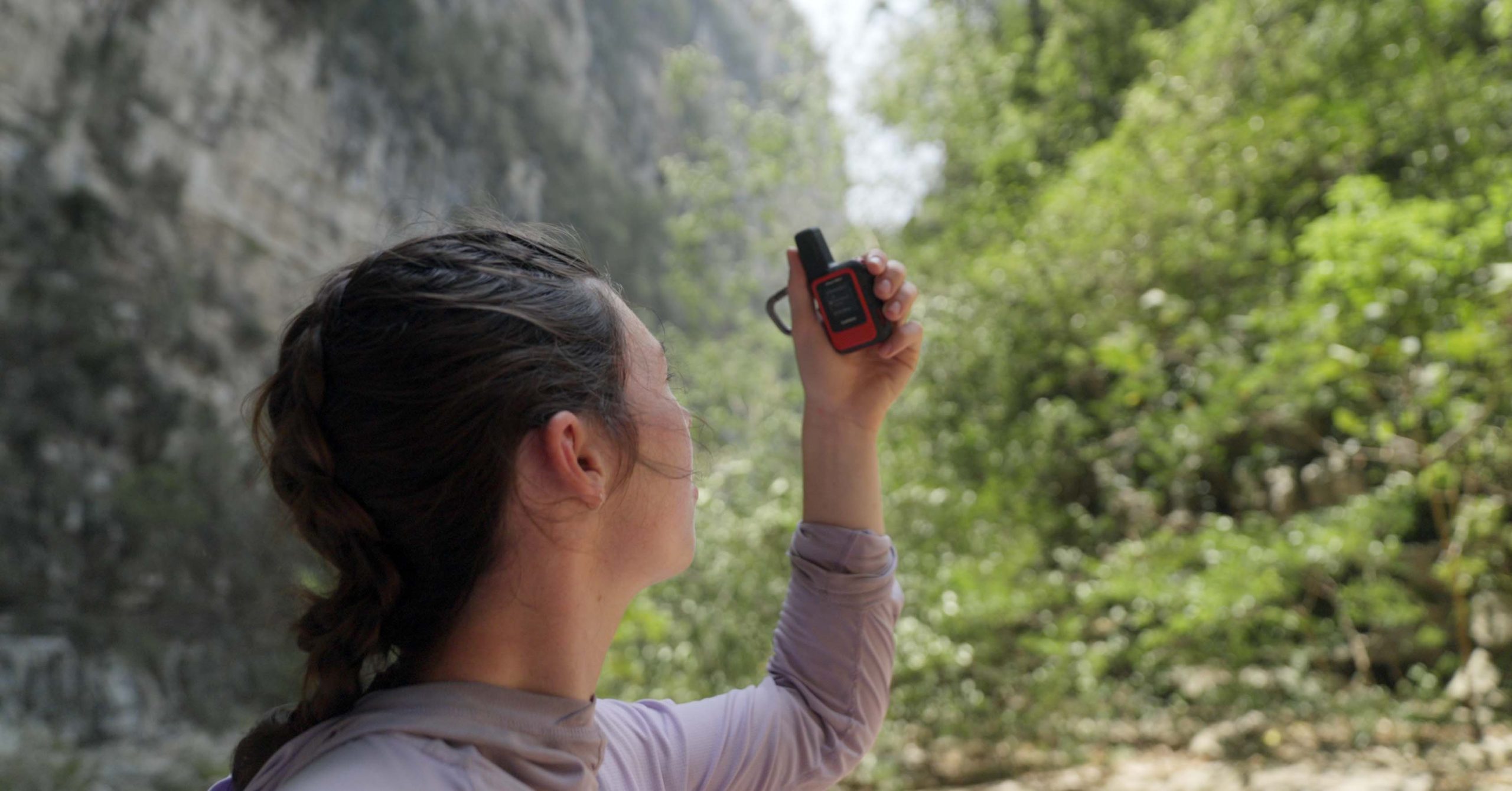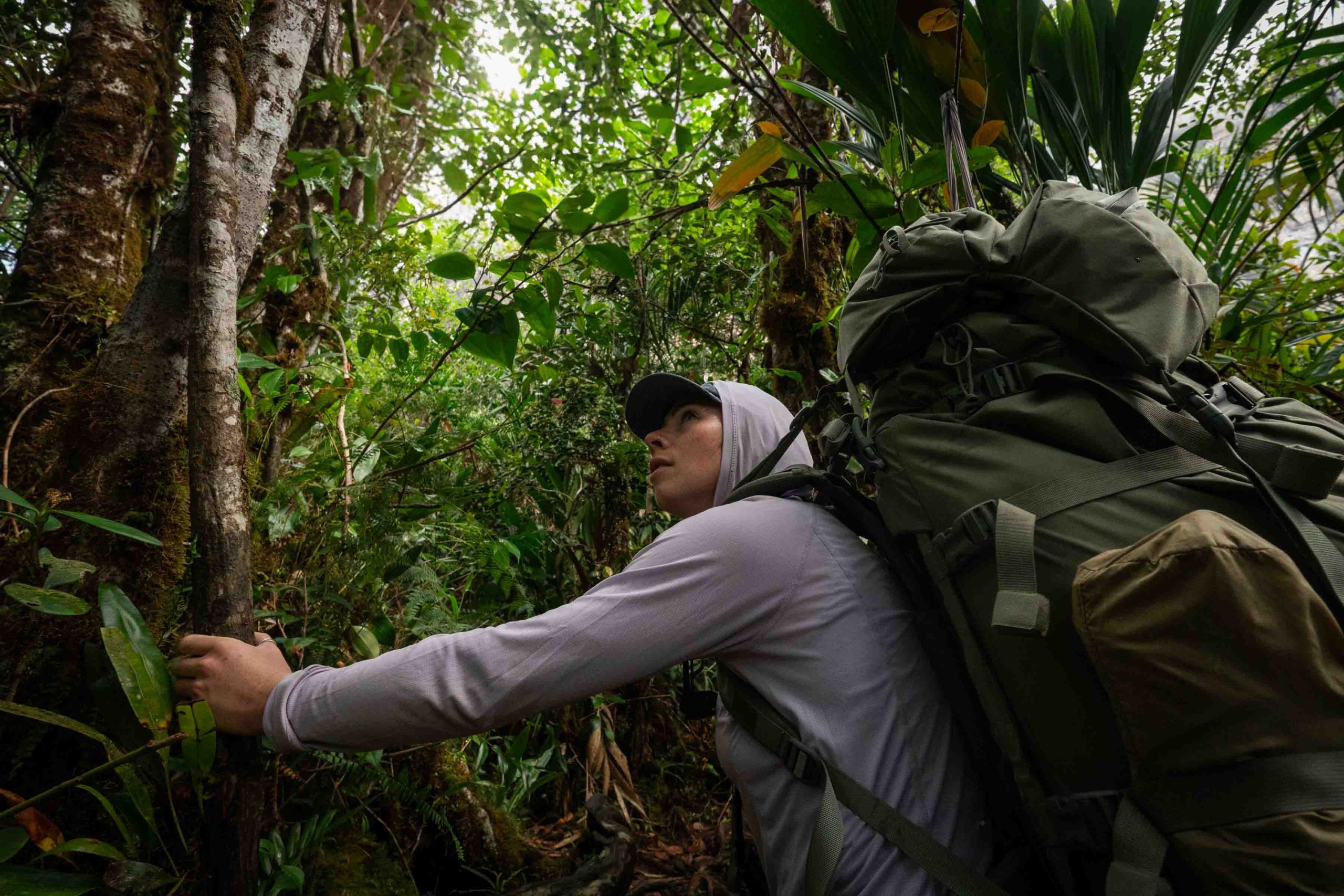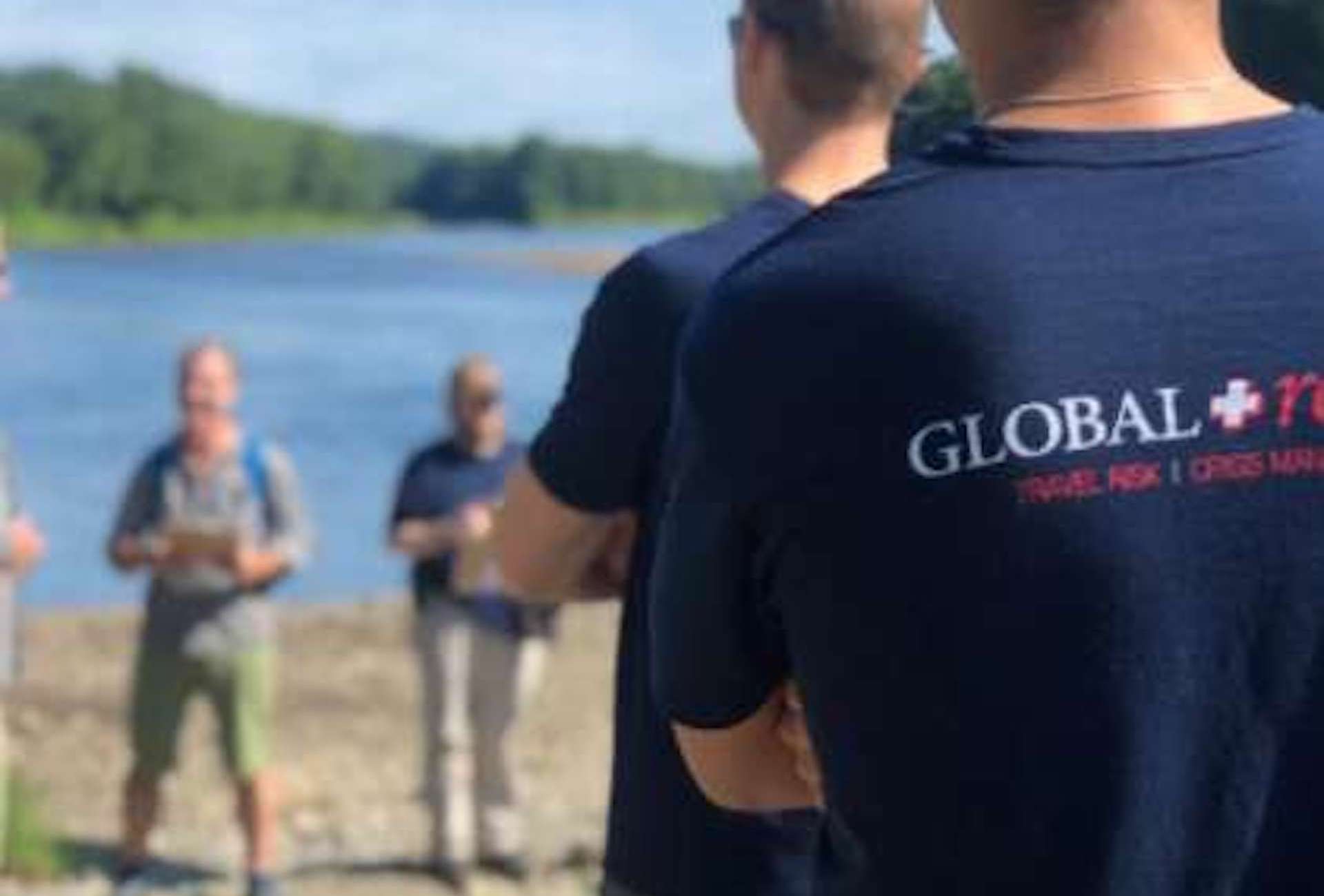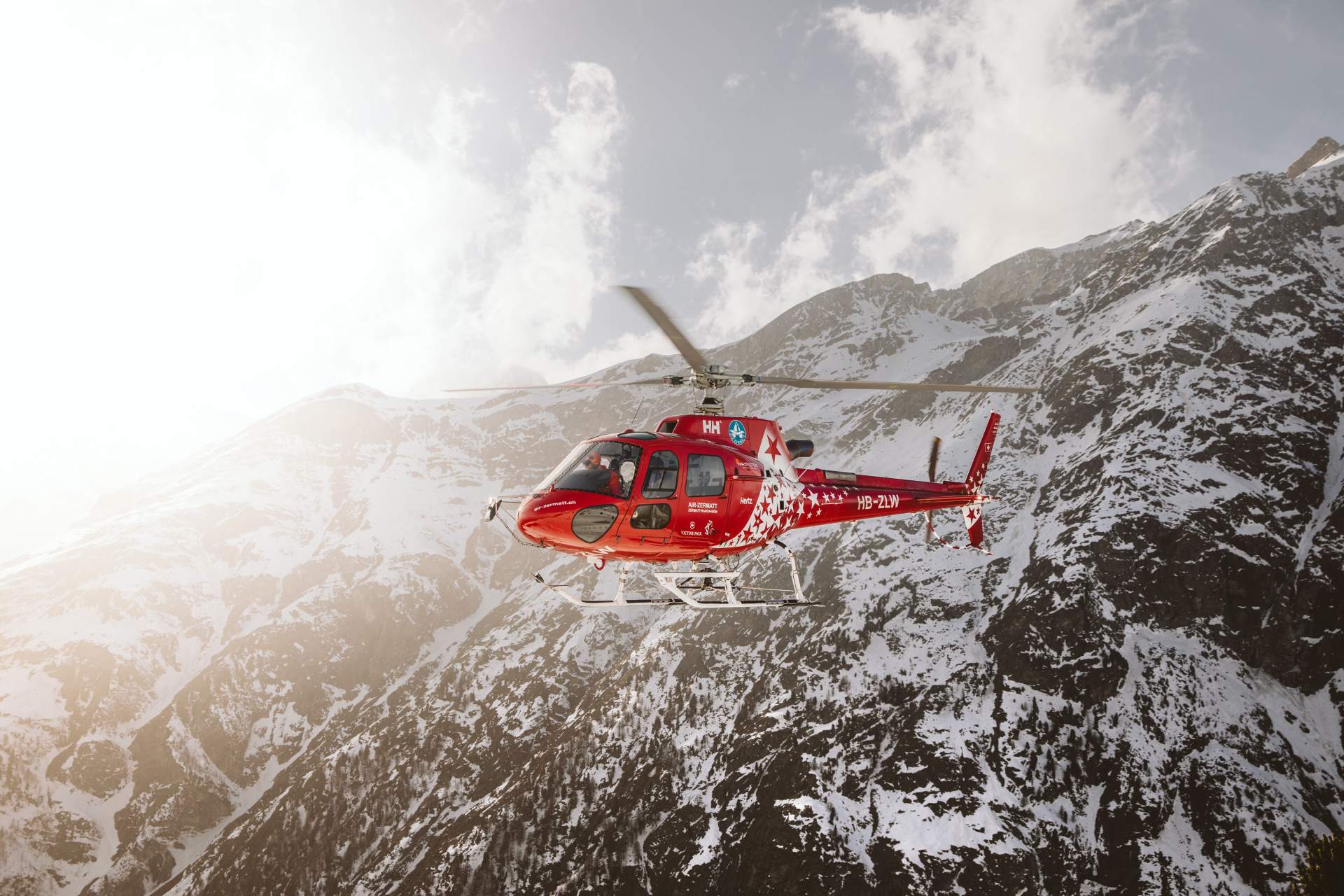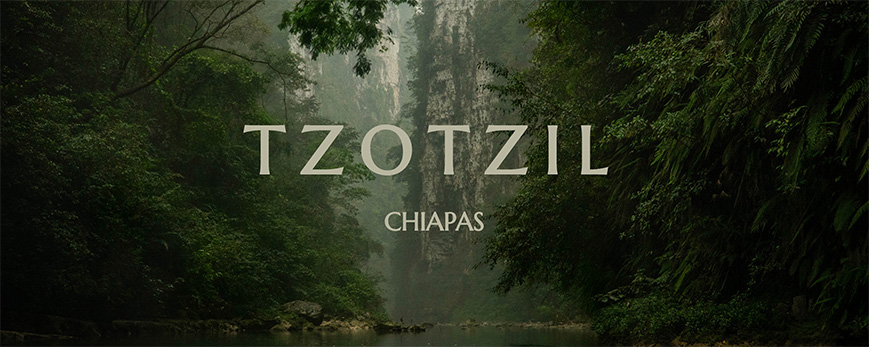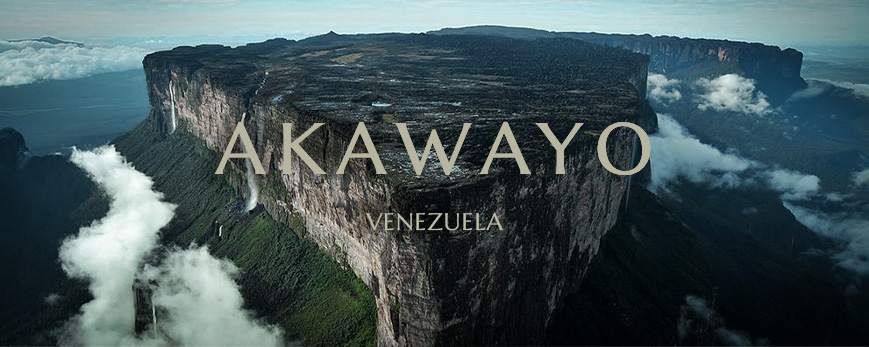Travel Insurance vs Rescue Insurance: What’s the Difference?
Knowing the difference between travel insurance and rescue insurance is essential for anyone heading into remote, high-risk, or international environments. This article explains the key differences between the two, how each type of coverage works, and why having them can be essential for safe, remote, or international travel.
NAHUA EXPEDITIONS
1 Aug 2025 ・ 7 min read
If you’re planning an expedition or international trip, you’ve probably been told to “make sure you have travel insurance.” But what about rescue insurance? Isn’t that the same thing? Not quite.
Understanding the difference between travel insurance and rescue coverage can save you from costly mistakes—and potentially save your life. These are two very different types of protection. In many cases, you’ll want both.
What Is Rescue Insurance?
Rescue insurance—also called medical evacuation membership or field rescue coverage—isn’t traditional insurance at all. It’s a membership-based service designed to get you out of dangerous or remote situations in an emergency. It focuses on physical extraction and emergency coordination, not financial reimbursement.
This type of coverage is essential for travelers heading to places where local emergency services are unreliable, limited, or simply non-existent.
Here’s what rescue insurance typically includes:
Field rescue and evacuation from the point of injury or illness
Medical transport to the nearest appropriate hospital
Security evacuation during political unrest, natural disasters, or conflict
24/7 emergency coordination from an expert operations team
Access to telehealth consultations and medical advisory services
In short: rescue insurance is your global safety net when things go wrong far from help. You don’t have to figure out how to get to a hospital—or even speak the language. A dedicated team handles the logistics and comes to you.
What it doesn’t do:
It doesn’t reimburse trip costs, baggage losses, or medical bills after treatment
It’s not a replacement for travel insurance or health insurance
It won’t typically cover routine illness or injuries unless they require evacuation
Many providers operate on a membership model, which means you don’t have to file a claim—you get real-time access to evacuation and support services the moment you need them. This is what makes rescue insurance especially valuable for adventure travelers, expedition groups, and anyone venturing off the beaten path.
What Is Travel Insurance?
Travel insurance, on the other hand, is exactly what it sounds like: financial coverage for things that go wrong during your trip. It is a financial safety net designed to protect you from the unexpected costs that can arise before or during a trip. Unlike rescue coverage, which gets you out of trouble physically, travel insurance is about reimbursing you for expenses when plans go sideways.
Here’s what standard travel insurance usually covers:
Trip cancellation or interruption due to illness, weather, or emergencies
Lost, stolen, or delayed baggage
Flight delays and missed connections
Emergency medical expenses while abroad
Accidental injury or illness treatment
Depending on the policy, you might also get coverage for things like rental car damage, adventure sports, or even limited evacuation—but these are often add-ons or come with exclusions that are easy to miss.
What it doesn't do:
It usually won’t evacuate you from a remote location.
It often requires you to pay out-of-pocket first and claim reimbursement later.
Many policies exclude “high-risk” activities, conflict zones, or pre-existing conditions.
A common misconception is that travel insurance “covers everything.” In reality, it’s more like a trip protection plan for your wallet—not a live-response safety system. This is why it pairs so well with rescue coverage—because one handles your logistics, and the other handles your losses.
Real-World Scenarios: When Each One Applies
Rescue Scenario
You’re injured on a trail, miles from the nearest road.
🟢 Rescue Provider sends a field team to evacuate you.
🔴 Travel Insurance alone would not cover this, or would require you to pay upfront.
Trip Cancellation Scenario
You cancel your trip due to illness a week before departure.
🔴 Rescue Provider doesn’t handle trip costs or cancellations. reimburses your prepaid expenses.
🟢 Travel Insurance reimburses your prepaid expenses.
Security Scenario
Civil unrest breaks out while you’re on a guided expedition.
🟢 Rescue Provider coordinates a secure evacuation.
🔴 Most Travel Insurance policies exclude political instability or conflict zones.
What Each Covers (At a Glance)
Bundled Protection: Rescue Coverage + Travel Insurance in One Place
One of the most useful options available to travelers today is the ability to get both rescue coverage and travel insurance from a single provider. This bundled approach offers comprehensive protection and eliminates the confusion of juggling multiple policies.
A well-structured system like this typically combines:
A rescue membership that covers on-the-ground field evacuation, medical and security extractions, and 24/7 emergency coordination.
A travel insurance policy that covers trip cancellation, emergency medical bills, baggage loss, and travel delays.
When both come from the same provider, they can streamline everything from emergency response coordination to claims processing—eliminating the delays, confusion, and finger-pointing that can happen when multiple companies are involved.
Why This Unified Approach Matters
Here’s how it works in practice:
You’re injured during a remote expedition: your rescue provider organizes and executes the evacuation.
You’re hospitalized or miss your return flight: your travel insurance policy reimburses your costs.
Everything is coordinated through one team—faster, clearer, and without gaps in coverage.
This combined setup offers three key advantages:
Simplified logistics during high-stress situations
Aligned policies that don’t conflict or overlap
One point of contact, instead of two or three separate companies
For remote or high-risk travel, this kind of all-in-one protection is invaluable.
A Provider That We Recommend
At Nahua Expeditions, we’ve chosen to partner directly with Global Rescue because, simply put, they’re the best in the business.
They offer both rescue services through their memberships, and optional travel insurance add-ons through IMG Signature Travel Insurance, which means you can build a complete protection package in one place. We’ve partnered with them because they’re professional, reliable, and—importantly—they understand the type of terrain and challenges our expeditions involve.
We recommend them because we’ve worked with their team, and we know they’re capable when it matters most.
To learn more about our partnership with Global Rescue, why we have given them our endorsement, and what makes them the number one rescue services provider in the world, see our Travel Insurance and Protection Page.
Key Takeaways For Travellers
- Rescue Membership = on-demand emergency support (medical + security)
- Travel Insurance = financial safety net for trip issues and medical bills
- Global Rescue + IMG = best-in-class, all-in-one solution
While we recommend the Global Rescue + IMG Signature Travel Insurance add-on for its simplicity and seamless coordination, it’s not the only option out there. There are many reputable companies that offer travel insurance—choose whichever provider best suits your needs.
If we were to fully recommend one piece of coverage, it would be Global Rescue’s field-tested rescue and evacuation Membership. For travel insurance specifically, you might prefer to go with a provider you’ve used before or one that aligns best with your travel style and location—what matters most is that you’re covered.
Cost Breakdown: What You’re Paying For
Global Rescue membership: Starts around $139 for a 7-day plan. Longer-term or high-altitude add-ons cost more.
Travel insurance add-on or standalone travel insurance : Usually 4–10% of your total trip value.
Combined cost: Often less than the price of your first missed flight or overnight emergency hospital visit.
A single emergency evacuation can cost anywhere between $30,000–$100,000 if you’re paying out-of-pocket. Most health insurance plans and credit cards won’t cover it.
Do you need both?
If you’re doing anything remotely adventurous or international, then it’s a good idea to have both. Here’s a simple guide:
Final Thoughts
The core difference between Travel and Rescue Insurance is simple:
Travel insurance protects your wallet.
Rescue insurance protects your physical wellbeing.
Knowing that distinction—and when each is appropriate—can make all the difference in how you prepare for your trips.
What's Next?
If you’re looking to explore places on earth that few people have ever experienced, Nahua Expeditions has a few expeditions that will challenge you, inspire you, and leave you with stories for a lifetime. Whether it’s navigating remote regions, pushing past your limits, or forging connections in the wild—we’re here to make it happen.
Stay Safe & Be Prepared: The information provided in this article is for general informational purposes only. Outdoor recreation involves inherent risks, and individuals are fully responsible for their own safety. Nahua Expeditions and its authors disclaim any liability arising directly or indirectly from the use of the information from this article.
Travel Insurance vs Rescue Insurance: What’s the Difference?
Knowing the difference between travel insurance and rescue insurance is essential for anyone heading into remote, high-risk, or international environments. This article explains the key differences between the two, how each type of coverage works, and why having them can be essential for safe, remote, or international travel.
1 AUG 2025 ・ 7 min read
Nahua Expeditions
If you’re planning an expedition or international trip, you’ve probably been told to “make sure you have travel insurance.” But what about rescue insurance? Isn’t that the same thing? Not quite.
Understanding the difference between travel insurance and rescue coverage can save you from costly mistakes—and potentially save your life. These are two very different types of protection. In many cases, you’ll want both.
What Is Rescue Insurance?
Rescue insurance—also called medical evacuation membership or field rescue coverage—isn’t traditional insurance at all. It’s a membership-based service designed to get you out of dangerous or remote situations in an emergency. It focuses on physical extraction and emergency coordination, not financial reimbursement.
This type of coverage is essential for travelers heading to places where local emergency services are unreliable, limited, or simply non-existent.
Here’s what rescue insurance typically includes:
Field rescue and evacuation from the point of injury or illness
Medical transport to the nearest appropriate hospital
Security evacuation during political unrest, natural disasters, or conflict
24/7 emergency coordination from an expert operations team
Access to telehealth consultations and medical advisory services
In short: rescue insurance is your global safety net when things go wrong far from help. You don’t have to figure out how to get to a hospital—or even speak the language. A dedicated team handles the logistics and comes to you.
What it doesn’t do:
It doesn’t reimburse trip costs, baggage losses, or medical bills after treatment
It’s not a replacement for travel insurance or health insurance
It won’t typically cover routine illness or injuries unless they require evacuation
Many providers operate on a membership model, which means you don’t have to file a claim—you get real-time access to evacuation and support services the moment you need them. This is what makes rescue insurance especially valuable for adventure travelers, expedition groups, and anyone venturing off the beaten path.
What Is Travel Insurance?
Travel insurance, on the other hand, is exactly what it sounds like: financial coverage for things that go wrong during your trip. It is a financial safety net designed to protect you from the unexpected costs that can arise before or during a trip. Unlike rescue coverage, which gets you out of trouble physically, travel insurance is about reimbursing you for expenses when plans go sideways.
Here’s what standard travel insurance usually covers:
- Trip cancellation or interruption due to illness, weather, or emergencies
- Lost, stolen, or delayed baggage
- Flight delays and missed connections
- Emergency medical expenses while abroad
- Accidental injury or illness treatment
Depending on the policy, you might also get coverage for things like rental car damage, adventure sports, or even limited evacuation—but these are often add-ons or come with exclusions that are easy to miss.
What it doesn't do:
- It usually won’t evacuate you from a remote location.
- It often requires you to pay out-of-pocket first and claim reimbursement later.
- Many policies exclude “high-risk” activities, conflict zones, or pre-existing conditions.
A common misconception is that travel insurance “covers everything.” In reality, it’s more like a trip protection plan for your wallet—not a live-response safety system. This is why it pairs so well with rescue coverage—because one handles your logistics, and the other handles your losses.
Real-World Scenarios: When Each One Applies
Rescue Scenario
You’re injured on a trail, miles from the nearest road.
🟢 Rescue Provider sends a field team to evacuate you.
🔴 Travel Insurance alone would not cover this, or would require you to pay upfront.
Trip Cancellation Scenario
You cancel your trip due to illness a week before departure.
🟢 Travel Insurance Provider reimburses your prepaid expenses.
🔴 Rescue Provider doesn’t handle trip costs or cancellations.
Trip Cancellation Scenario
Civil unrest breaks out while you’re on a guided expedition.
🟢 Rescue Provider coordinates a secure evacuation.
🔴 Most Travel Insurance policies exclude political instability or conflict zones.
What Each Covers (At a Glance)
Bundled Protection: Rescue Coverage + Travel Insurance in One Place
One of the most useful options available to travelers today is the ability to get both rescue coverage and travel insurance from a single provider. This bundled approach offers comprehensive protection and eliminates the confusion of juggling multiple policies.
A well-structured system like this typically combines:
- A rescue membership that covers on-the-ground field evacuation, medical and security extractions, and 24/7 emergency coordination.
- A travel insurance policy that covers trip cancellation, emergency medical bills, baggage loss, and travel delays.
When both come from the same provider, they can streamline everything from emergency response coordination to claims processing—eliminating the delays, confusion, and finger-pointing that can happen when multiple companies are involved.
Why This Unified Approach Matters
Here’s how it works in practice:
You’re injured during a remote expedition: your rescue provider organizes and executes the evacuation.
You’re hospitalized or miss your return flight: your travel insurance policy reimburses your costs.
Everything is coordinated through one team—faster, clearer, and without gaps in coverage.
This combined setup offers three key advantages:
Simplified logistics during high-stress situations
Aligned policies that don’t conflict or overlap
One point of contact, instead of two or three separate companies
For remote or high-risk travel, this kind of all-in-one protection is invaluable.
A Provider That We Recommend
At Nahua Expeditions, we’ve chosen to partner directly with Global Rescue because, simply put, they’re the best in the business.
They offer both rescue services through their memberships, and optional travel insurance add-ons through IMG Signature Travel Insurance, which means you can build a complete protection package in one place. We’ve partnered with them because they’re professional, reliable, and—importantly—they understand the type of terrain and challenges our expeditions involve.
We recommend them because we’ve worked with their team, and we know they’re capable when it matters most.
To learn more about our partnership with Global Rescue, why we have given them our endorsement, and what makes them the number one rescue services provider in the world, see our Travel Insurance and Protection Page.
Key Takeaways For Travellers
- Rescue Membership = on-demand emergency support (medical + security)
- Travel Insurance = financial safety net for trip issues and medical bills
- Global Rescue + IMG = best-in-class, all-in-one solution
While we recommend the Global Rescue + IMG Signature Travel Insurance add-on for its simplicity and seamless coordination, it’s not the only option out there. There are many reputable companies that offer travel insurance—choose whichever provider best suits your needs.
If we were to fully recommend one piece of coverage, it would be Global Rescue’s field-tested rescue and evacuation Membership. For travel insurance specifically, you might prefer to go with a provider you’ve used before or one that aligns best with your travel style and location—what matters most is that you’re covered.
Cost Breakdown: What You’re Paying For
Global Rescue membership: Starts around $139 for a 7-day plan. Longer-term or high-altitude add-ons cost more.
Travel insurance add-on or standalone travel insurance : Usually 4–10% of your total trip value.
Combined cost: Often less than the price of your first missed flight or overnight emergency hospital visit.
A single emergency evacuation can cost anywhere between $30,000–$100,000 if you’re paying out-of-pocket. Most health insurance plans and credit cards won’t cover it.
Do you need both?
If you’re doing anything remotely adventurous or international, then it’s a good idea to have both. Here’s a simple guide:
Final Thoughts
The core difference between Travel and Rescue Insurance is simple:
Travel insurance protects your wallet.
Rescue insurance protects your physical wellbeing.
Knowing that distinction—and when each is appropriate—can make all the difference in how you prepare for your trips.
What's Next?
If you’re looking to explore places on earth that few people have ever experienced, Nahua Expeditions has a few expeditions that will challenge you, inspire you, and leave you with stories for a lifetime. Whether it’s navigating remote regions, pushing past your limits, or forging connections in the wild—we’re here to make it happen.
Stay Safe & Be Prepared: The information provided in this article is for general informational purposes only. Outdoor recreation involves inherent risks, and individuals are fully responsible for their own safety. Nahua Expeditions and its authors disclaim any liability arising directly or indirectly from the use of the information from this article.

